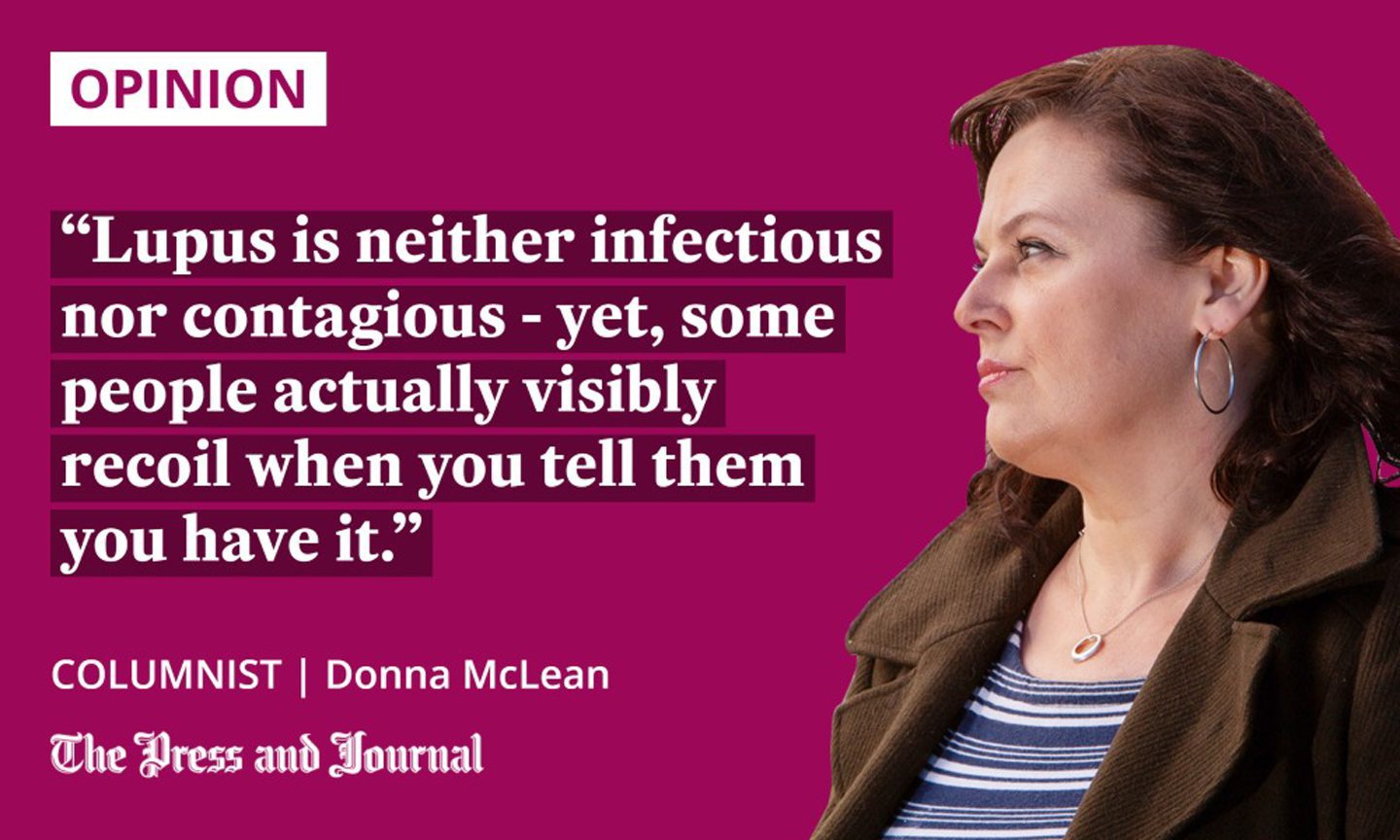‘Invisibility’ is the hardest part of a chronic condition, because you feel you must prove the reality of your hidden challenges, writes Donna McLean.
Having any kind of illness is tough, but when it is also invisible, at times it can feel a struggle to cope. In the UK today, one in five people have a disability and, of those, 80% are “invisible”.
I’m one of those people. For the past decade, I’ve lived with a condition called lupus: a chronic autoimmune disease, in which the immune system is dysfunctional and mistakenly identifies the body’s own tissues as foreign invaders.
“Lupus” is the Latin word for wolf. A severe facial rash, rarely seen now, called lupus vulgaris was once thought to resemble a wolf’s bite, hence the name.

I may look healthy, but there are times when I can’t leave the house, and there have been days when even getting out of bed is a struggle. When I’m experiencing a flare-up, my symptoms include joint pain, extreme fatigue, and pleurisy (inflammation of the tissue between the lungs and ribcage). Lupus is a disease with a myriad of symptoms, and rarely do two people have the same ones.
You’d have no idea anything was wrong with me
My very first symptom – when I was 38 – was the sudden onset of Raynaud’s. I then had what seemed like a flu virus, lasting around six weeks.
From there, over a couple of years, I experienced a whole host of random and seemingly unrelated symptoms. It appeared, at times, that my body was going completely haywire.
At that point, I had twin toddlers and a highly demanding job, managing a cluster of community drug and alcohol treatment services in London. But, if you passed me on the street, you would have no idea anything was wrong with me.
In fact, around that time, people often complimented me on how well I looked. I’d lost weight and, let’s face it, that’s still seen as a positive.
Some would say: “You don’t look sick.” Others asked: “Have you tried [any number of wacky therapies]?”
A few thought I was a hypochondriac. This can be horribly isolating when you’re struggling, and all you want is a clear diagnosis, proper treatment and support.
‘Invisible’ conditions are common
I’m part of a large community of people who live with “invisible conditions”, and who often face enormous hurdles when trying to get the right treatment.
It took a long time to be able to identify my illness. I was originally diagnosed with reactive arthritis, which appeared to be prompted by an episode of strep throat. It took another four years for me to get the correct diagnosis of SLE, or lupus.
One or more triggers can set off the illness in people who may be susceptible (90% of whom are women), including childbirth, puberty, the menopause, a viral infection, sunlight, and trauma.
Lupus is often seen in people where there is an existing family history of the condition and/or other immune system illnesses, like rheumatoid arthritis or MS. It’s neither infectious nor contagious – yet, some people actually visibly recoil when you tell them you have it.
People act differently when they can ‘see’ your illness
“Invisibility” is one of the most difficult things to deal with when chronically ill, because you feel you must prove the reality of your hidden challenges to everyone. This is – as I have learned – impossible.
I remember being shouted at for using a disabled toilet in King’s Cross station, someone literally banging on the door, yelling at me to get out.
I was taken aback recently when I was on crutches due to a knee injury – everyone was so accommodating and helpful
I’d travelled back from work in the north of England in agony, after my body seized up completely due to having parvovirus. Common in nursery-age children, I had no idea I had it, nor the impact it would have on an adult with a wonky immune system. I was in tears by the time I made it home.
I was taken aback recently when I was on crutches due to a knee injury – everyone was so accommodating and helpful; people offering me seats, traffic stopping, customers in shops letting me go first. The visibility of this incapacity was in stark contrast to the secret, debilitating disease I’ve had for 10 years.
You are not your pain
I’m currently having a mini-flare, after an apparent allergic reaction. It’s frustrating every time this happens. Over the years, I’ve had to tell myself that, just because today is bad, it doesn’t mean tomorrow will be. You can’t predict the future.
If you have an invisible illness, remember you are not defined by it, you are not your pain and – most of all – don’t feel guilty! Trust your gut, because you know your own body more than anyone else.
And rest, rest and rest more – even if there are a hundred things on your to-do list.
I know people recovering from Covid, and possibly also with long Covid. My mantra is: don’t try to push through fatigue. It can be counterproductive, even dangerous – as anyone with ME will tell you.
And, if you happen to meet someone with a hidden illness? As tempting as it may be, try not to say how healthy they look. We know it’s meant well, but it can feel like we’re not being believed.
Try not to get annoyed if your friend with an invisible illness keeps rearranging plans, or even cancels at the last minute. These conditions can be frustratingly unpredictable. Believe me, they want to be out with you more than you’ll ever know.
Donna McLean is originally from Ayrshire and is a mum of twins, writer and activist



Conversation